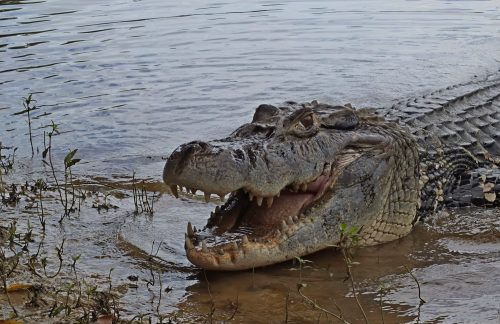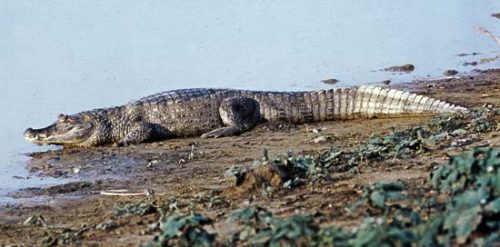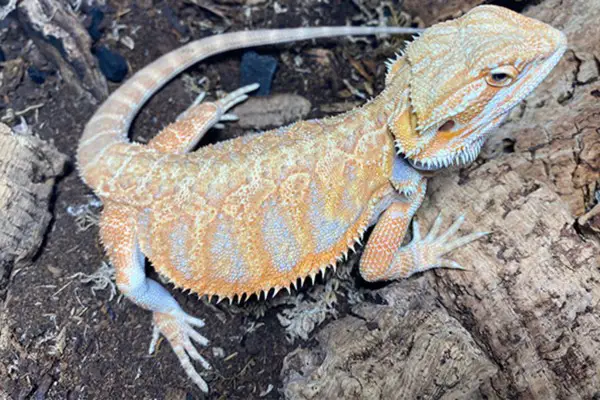The black caiman (Melanosuchus niger) is one of the largest living alligators and it is typically found in the freshwater habitats of South America. In the Amazon rainforests, black caiman is the largest predator as it is thought to hunt reptiles, mammals, fish, and small birds. The caiman reproduces in the dry season and it becomes extremely aggressive. In the New World crocodilians the black caiman is one of the most threatened species.
Black Caiman Facts
Anatomy
- The black caiman is mainly recognized by its scaly dark-colored skin. The skin helps the animal to camouflage and it is mostly most effective when the caiman must hunt nocturnal birds.
- They have large brownish eyes which gives a wider view at night.
- Young are distinguished by their pale yellow bands that are designed on the flanks of the body. The yellow color fades away as the caiman reaches adulthood.
- Black caiman has slender skull in comparison to other caiman species.
- Adults reach length of about 2.8 to 4.26 meters (9.2–14 ft). Large specimen however grows up to 5 m (16 ft) and weighs as much as 400 kg.
- The mean length of males is 2.5–3.35 m (8.2–11.0 ft) while they weigh up to 95–100 kg (209–220 lb). Females are nearly the size of an adult male.
- Caimans living in the Araguaia River are likely to be longer in body length.
- The Orinoco crocodile and the American crocodile are of the same size as that of black caiman.

Range & Habitat
- Black caimans are likely to make homes in a wide variety of freshwater habitats including streams, oxbow lakes, slow-moving rivers, flooded savanna, and wetlands.
- They are widely distributed throughout the Amazing River Basin and its range extends Bolivia, Guyana, Venezuela, Brazil, Ecuador, Peru, and Colombia. The largest concentration of black caimans is found in the French Guiana.
Feeding Ecology & Diet
- Like most large reptiles, the black caiman is a carnivorous species. Young caimans consume insects, small fish, crustaceans, invertebrates, frogs, and other aquatic vertebrates. However as they come of age they begin to rely on piranhas, perch, and large fish. Black caimans are nocturnal species.
- At times young caimans rely too much on snails and small fish that they seem to become an essential part of their diet.
- The black caiman’s diet consists of snakes, catfish, mammals, birds, and turtles.
- Adults consume sloths, coatis, pacas, armadillos, capybaras, and agoutis. They also eat larger prey such as deer, giant otters, peccaries, anacondas, tapirs, dogs, horses, and even other caiman species.
- Some attacks on young cougars are also reported but these extremely rare.

Reproductive Biology
- The breeding season occurs in the dry season. The female builds a nest which is 0.75 meters wide (2.5 ft) and measures 5 meters (5 ft) across. She builds a nest of soil and vegetation.
- A female lays 30 – 65 leathery eggs and the eggs hatch in about 42 days in the wet season.
- The typical weight of the eggs is about 144 g (5.1 oz).
- The breeding interval is 2 – 3 years.
- Predators of black caiman’s eggs include large rodents, herons, vultures, snakes, and South American coatis.





